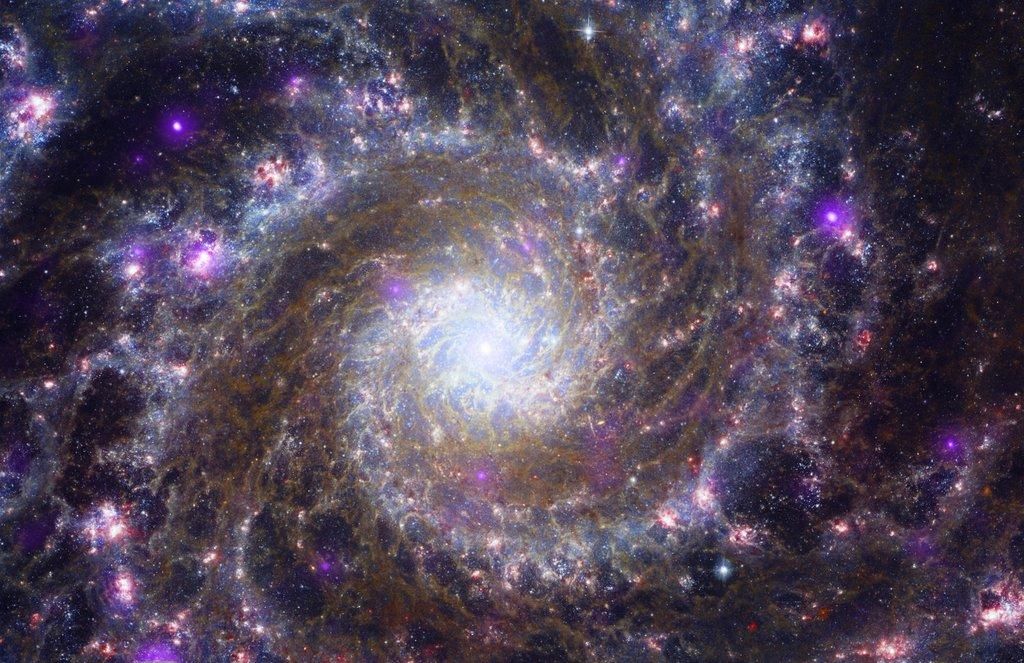Five space telescopes combine to deliver dazzling galactic views

Images from NASA’s Chandra X-ray Observatory and James Webb Space Telescope were combined with data from NASA’s Hubble Space Telescope and retired Spitzer Space Telescope, plus the European Space Agency’s XMM-Newton space telescope to provide never before seen views of two galaxies, a nebula, and a star cluster.

NGC 346 Star Cluster
The Small Magellanic Cloud, a star cluster in a galaxy about 200,000 light-years from Earth, is known to astronomers as NGC 346. This is a birthplace for stars.
Webb shows plumes and arcs of gas and dust that stars and planets use as source material during their formation. Chandra provides views in show above in of the remains of a supernova explosion from a massive star. The Chandra data also reveals young, hot, and massive stars that send powerful winds outward from their surfaces.
Additional data from Hubble and Spitzer is included, along with supporting data from XMM-Newton and ESO’s New Technology Telescope. (X-ray: purple and blue; infrared/optical: red, green, blue)

NGC 1672 bared spiral galaxy
Chandra (purple) data reveals compact objects like neutron stars or black holes pulling material from companion stars, as well as the remnants of exploded stars. Additional data from Hubble (red, blue, and green) helps fill out the spiral arms with dust and gas. while Webb data (red, green, and blue) shows dust and gas in the galaxy’s spiral arms.

Pillars of Creation (M16)
The Webb image reveals dark columns of gas and dust shrouding the few remaining fledgling stars just being formed. The young stars and the massive amounts of X-rays they give off appear as dots to Chandra. (X-ray: red, blue; infrared: red, green, blue)

M74 Spiral Galaxy
Messier 74, a spiral galaxy like our Milky Way, is about 32 million light-years away. Astronomers call this the "Phantom Galaxy" because it is dim and among the most difficult in Charles Messier’s famous catalog of objects in the sky to spot. Webb outlines gas and dust in the infrared while Chandra data spotlights high-energy activity from stars at X-ray wavelengths. Hubble optical data showcases additional stars and dust along the dust lanes. (X-ray: purple; optical: orange, cyan, blue, infrared: green, yellow, red, magenta).

Each telescope is sees into different parts of the electromagnetic spectrum. Only Hubble's view of the visible spectrum is perceptible by the human eye. The others use infrared to bring into view the gas and dust that give birth to stars and planets and evidence of black holes robbing nearby stars of material (James Webb and Spitzer) and X-ray to see high energy coming from newly formed stars along with the remnants of stars at the end of their lives (Chandra and XMM-Newton).
Data outside the visible spectrum are mapped to colors that humans can perceive. The European Southern Observatory’s ground based New Technology Telescope was also used in creating these images.








